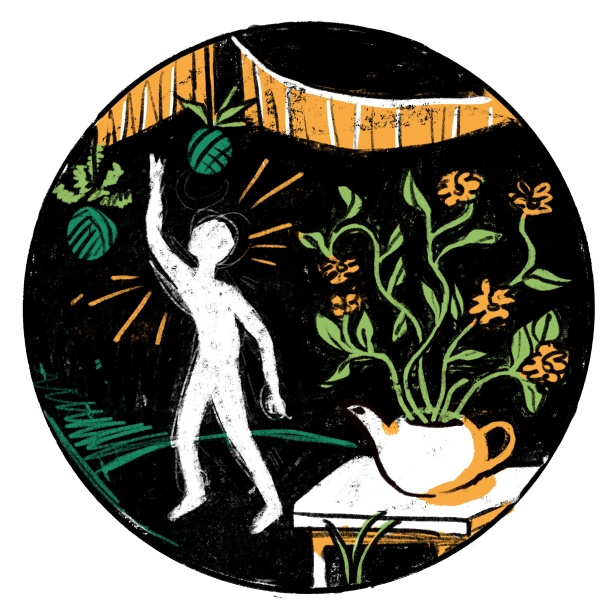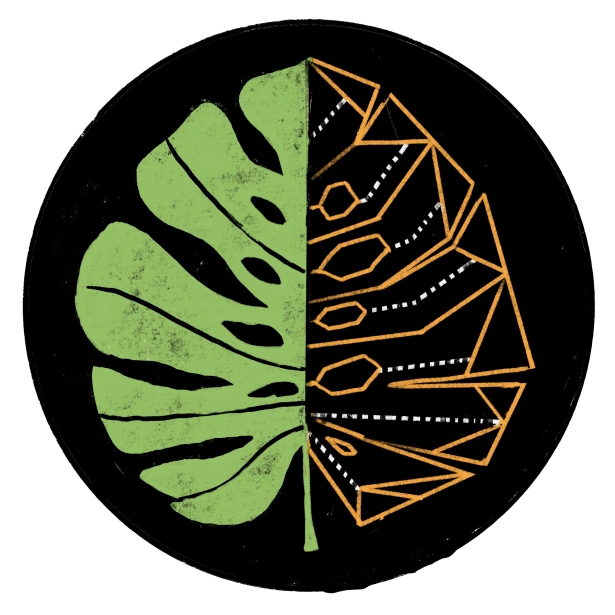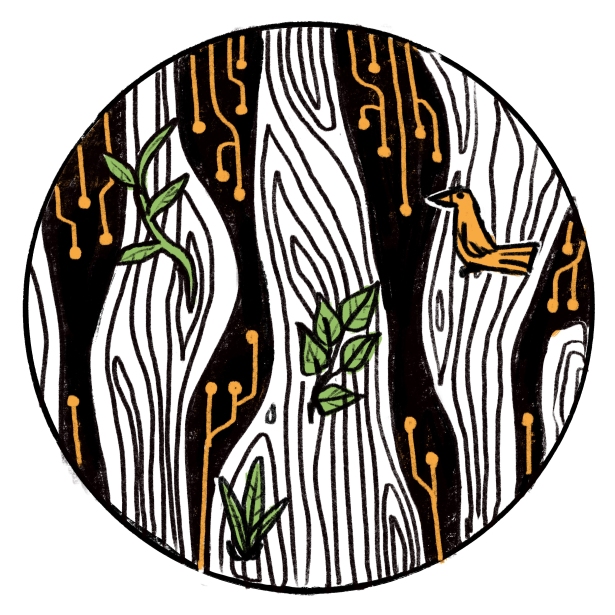By Mary Woodbury
This month we travel to the Arctic – Greenland, specifically – with author Erica Ferencik, via her novel Girl in Ice (March 2022, Scout Press/S&S). I’m absolutely floored after chatting with Erica about her firsthand experiences when writing.
Erica throws herself wholeheartedly into the dangerous environments where her novels are set. She ventured deep into the remote forests of the Allagash Territory in northern Maine for The River at Night, rafted the Amazon River in the jungles of Peru for Into the Jungle, and for her new book, Girl in Ice, out by Scout Press/S&S in March 2022, she spent several weeks exploring the desolate iceberg-packed fjords of Greenland.
She recalls,
The thin metal skin of the helicopter was the only thing between me and a thousand-foot plummet into the mile-deep fjord. Around our encampment on the ice, a flimsy-looking electric fence was the sole discouragement to hungry, roving polar bears. I received casual instructions to ‘turn toward the noise’ while kayaking among stories-high bergs in case they were to split and roll, creating tsunami-sized waves.
ABOUT THE BOOK
Valerie “Val†Chesterfield is a linguist trained in the most esoteric of disciplines: dead Nordic languages. Despite her successful career, she leads a sheltered life and languishes in the shadow of her twin brother, Andy, an accomplished climate scientist stationed on a remote island off Greenland’s barren coast. But Andy is gone: a victim of suicide, who willfully ventured unprotected into 50-degree-below-zero weather. Val is inconsolable – and disbelieving. She suspects foul play.
When Wyatt, Andy’s fellow researcher in the Arctic, discovers a scientific impossibility – a young girl frozen in the ice who thaws out alive, speaking a language no one understands – Val is his first call. Will she travel to the frozen North to meet this girl, and try to comprehend what she is so passionately trying to communicate? Under the auspices of helping Wyatt interpret the girl’s speech, Val musters every ounce of her courage and journeys to the Arctic to solve the mystery of her brother’s death.
The moment she steps off the plane, her fear threatens to overwhelm her. The landscape is fierce, and Wyatt, brilliant but difficult, is an enigma. But the girl is special, and Val’s connection with her is profound. Only, something is terribly wrong; the child is sick, maybe dying, and the key to saving her lies in discovering the truth about Wyatt’s research. Can his data be trusted? And does it have anything to do with how and why Val’s brother died? With time running out, Val embarks on an incredible frozen odyssey – led by the unlikeliest of guides – to rescue the new family she has found in the most unexpected of places.
A CHAT WITH THE AUTHOR
I am amazed by the types of novels you’re writing. They take place in interesting places (a jungle, a remote forest, and now an icecap). Your research is hands-on, and you travel places ahead of time. What’s that like? What’s your favorite experience in the beautiful but isolated landscapes you have visited?
No matter how much I read or google, I can’t possibly bring these worlds alive for myself – never mind the reader – without going there first. I absolutely love every minute of these trips, no matter how cold, hot, scared, freaked out, and lost I may be. This is our world and, as troubled as it is, it is still full of wonders!
That said, I have a tendency to get mired – okay, lost – in research. The way I see it, once you open one of these fascinating doors, in the case of Girl in Ice, animals that can thaw out alive, the Little Ice Age, ancient Arctic civilizations, Greenlandic wildlife, Nordic languages, glaciology, climate science, where do you stop? The answer for me is: know my story first. Otherwise, I will fall into the black hole of research and never emerge.
Before leaving for my trip to Greenland in August of 2019, I made sure to wrap up a comprehensive outline for Girl in Ice. As much as I intended to keep myself open to any and all experiences on the trip, I needed to keep a special eye out for any aspect of the place – people, culture, landscape, animals – that would figure heavily in the story. In addition to the trip, I read dozens of books on Arctic exploration, Greenlandic history, and linguistics.
This sort of preparation was true for all my books. I knew my story intimately before embarking on my research trip to the Allagash Territory in Northern Maine for The River at Night, and certainly for my one-month immersive trip to the Peruvian jungle for Into the Jungle.
One of my favorite experiences was camping near the ice sheet in Greenland near a bay packed with giant (think five-story building) icebergs. For whatever reason, we hadn’t seen much of the northern lights, but on our last night there, something amazing happened. An explosion woke us at three in the morning. We all stumbled out of our tents in our long johns, hoping that the world hadn’t come to end.
Not this time. A cruise-ship-sized iceberg had broken in two in the bay. Waves pounded the shore; seafoam glowed in the moonlight.
Seconds later, as if the two events were related, the northern lights flickered across the sky: mad swaths of purple, green, orange and yellow. We gathered sleeping bags and pillows to lie out on slabs of rock near the bay. Colors flashed and danced; speech failed us. My hands and feet were numb with cold, but escaping into my warm tent was out of the question. Never had I felt more like stardust, never more like part of this gorgeous world. I kept asking myself, how can this be more beautiful, and in the space of a breath, it was.
That’s amazing (and my dream to see). What got you on the road to thinking about and writing Girl in Ice, and what do you want readers to know about the background experience?
One bitterly cold morning in the winter of 2018, I was walking in the woods near my home, and came upon what looked like juvenile painted turtles frozen mid-stroke in the ice along the shallow edge of a pond. They didn’t look alive, but they didn’t look dead either.
It turns out there are some animals (and plants too!) that have this freezing-and-coming-back-to-life thing down. Painted turtle hatchlings, some species of beetle, wood frogs, certain alligators, even an adorable one-millimeter length creature called a Tardigrade or “water bear†that can be frozen to minus 359C and thaw out just fine. Most of these creatures possess a certain cryo-protein that protects their cells from bursting when they freeze.
A protein that… we don’t possess. Still, the image of a young girl frozen in a glacier in the Arctic popped into my head. From there, I asked myself: How did she get there? What was her story?
That’s a cool start! You stated in an interview, “I’d say never stop learning your craft, whether that’s through reading what you admire or writing.†What have you learned from prior novels that shaped some of Girl in Ice?
Every time I write a book it’s as if I’ve never written one before. I have to learn all over again how in the world to construct something so daunting and overwhelming. It’s like climbing Everest with barely enough oxygen, without a sherpa, in business casual.
But this time I learned, or re-learned to love the research, but be careful! Don’t get mired in it. The story comes first. Concoct a small, knowable world. Create fewer characters, better fleshed out. Don’t shy away from painful situations or emotions. Love or at least have empathy for all of your characters. Embrace your weird. Keep the dread going. Vet every sentence, paragraph, scene. Make every word count. And it’s fine to make your reader laugh, cry, or cower in fear, but most of all, you’ve got to make them wait.
Your website states “My passion is to create unputdownable novels set in some of the most inhospitable regions on earth, places most of us don’t get a chance to experience in person in our lifetimes.†How did that passion originate?
I love any great story no matter where it’s set; however, I’ve got a real soft spot for any novel or film set in a forbidding place. I could speculate all kinds of deep psychological reasons for my love of survival stories. Let me put it this way: like so many others, I survived an extremely challenging childhood, and so I have ready access to dread, to feeling trapped, to planning creative ways to survive. In short, my fight or flight hormones are quite close to the surface.
How did you approach creating the language the girl in the ice uses?
I immersed myself in the sounds and cadences of the living Nordic languages, among them Swedish, Danish, Norwegian, Finnish, Icelandic, and of course Greenlandic, in order to get a feel for inflection and tone. I also dove into recordings of Old Norse, the main language of the Vikings, in order to create morphemes, or units of meaning that sounded Nordic, but that were just slightly distinct from known languages, so I could create Sigrid’s unique tongue.
What I had to grapple with next was: How would Val be able to interpret Sigrid’s speech if there was no correlation to any living or even dead language? I consulted some linguist friends who said that without any remnants of written language or cultural clues from a society that spoke the language – with nothing to go on, basically – you’d have to start with simple nouns, verbs, and concepts, almost like a baby pieces together her language.
The plot touches upon deadly ice storms; are these a real current threat stemming from global warming?
There are such things as katabatic winds. In Greenland, they’re called piteraqs: brutally strong winds generated by radically different air temperatures, often barreling down the slopes of mountains or glaciers. I’m not a climate scientist or meteorologist. But climate change strengthens hurricanes, tornadoes, wind events in general, as well as prompting dramatic swings in temperature, so I thought it wasn’t too far of a reach – for story purposes – to say that deadly ice storms are in our future and might have been in our past.
What was the most challenging part of the field research you did for this book?
Leaving Greenland, just when I was getting a feel for the place, was the worst part of a mostly smooth trip. A profoundly melancholic feeling of when will I ever be here again? I could have stayed weeks longer kayaking the fjords, interviewing townspeople, trying to pick up at least some of the language, scouting for wildlife. I couldn’t get enough of city-block long icebergs, carved into incredibly bizarre shapes by sun and sea, the blow of fin whales in the bay, the northern lights, and our Greenlandic guide’s hair-raising tales of hunting and survival.
The most surprising thing you learned from that research?
This is going to sound silly, but the fact that Greenland is so big, just so vast, and yet so few people live there was hard to wrap my mind around. Only 57,000 people – one tenth the residents in all of Wyoming – call this island, the largest in the world at about a third the size of Canada, home. Most live in Nuuk, the capital; the rest live in towns often with fewer than 500 inhabitants along a three-thousand-mile coastline, mostly on the west side. The ice sheet measures fifteen hundred miles north to south, is two miles deep at its thickest, covers nearly 80% of Greenland, and has been frozen for three million years.
The second thing that shocked me was how close Greenland is to pre-history. As recently as 1950, people lived in sod huts: low, square dwellings built by digging a hole in the ground during the short summer season – plus or minus fifty days – then creating a supporting structure for a roof out of whale ribs or driftwood, finally sealing it with skins, peat and rocks.
And it’s one thing to read that the economy is mostly subsistence hunting and fishing; it’s another to witness it, read about quotas for narwhal and minke whale, learn what happens when a polar bear is spotted (it’s not gentle), understand that sled dogs are seen as possessions, not pets, that need to be fed. And, sad as it is to witness for someone unaccustomed to this life, it’s cheaper to hunt seal than cough up five dollars for a can of imported dog food.
Most shocking of all? There are no penguins.
How did it differ, apart from the climate, from your field research in Northern Maine, and Peru?
For a month in the winter of 2014, I was on my own in the Allagash Territory in Northern Maine conducting research for The River at Night. No guide, no touring company. By making dozens of someone-who-knows-someone phone calls, I cobbled together interviews with people who had disappeared themselves from society. It got dicey at times. One guy would only agree to an interview if I met him at a certain mile marker along a logging road where he arrived on horseback. I vetted everyone and always had my mace.
In the Peruvian jungle doing research for Into the Jungle, I had my own guide, a native and lifelong hunter armed with a machete and a masterful knowledge of the rainforest. I was frankly terrified to get on the plane. I’d prepared myself by reading everything I could about the jungle and didn’t think I would survive it; there is such a thing as knowing too much! But by the time I left Peru, four weeks later, I felt confident and calm, even with piranha I’d caught for dinner snapping at my toes and flipping around in the bottom of my dugout canoe.
In Greenland, my fellow explorers and myself had access to a native guide and hunter who also served as translator. We were able to interview a mayor of a Greenlandic town, as well as several residents, including other hunters. We explored by small plane, helicopter, kayak, small boat, and on foot, camping just a stone’s throw from the ice cap.
This series features authors who tackle environmental issues or include natural beauty as a strong element in their story. How does your novel fit into this thread?
Settings including natural beauty are wonderful, but the human story, and all the emotions we experience, are what we all crave and ultimately respond to. In constructing a novel, for me, story comes first, but for each novel I’ve written over the last decade (closing in on number four), the climate emergency looms larger and larger in my thoughts, emotions, and ultimately in my stories.
Climate- or eco-fiction, or any story involving the environment can be set anywhere, since climate change impacts us worldwide, in small and large ways. It could be a thriller set in the near future about water wars or mass emigration, or it could be a more intimate story set on a smaller canvas, perhaps something about someone who has to abandon a beloved family home along a coast due to the encroaching tide.
Readers want to think, but more than anything else they want to feel, they want a deeper understanding of life. This is best done through story. I believe that Girl in Ice is a solid story that deals with the impending ravages of climate change in both a speculative and realistic way, in broad strokes but also revealing the deep trauma that – unfortunately – we are all just beginning to understand and experience.
I believe so too. Are there ways in which your decade doing standup and sketch comedy has influenced your writing of fiction?
They say that comedy is the angry art. And it’s true. As long as you’re funny, you get to go up there and rail against what you perceive as unfair, wrong, absurd, and so on. There is a lot of darkness in comedy. In fact, I defy you to tell me an actually funny grownup joke without a dark, or tragic, or sad kernel. Jokes about happy things aren’t funny. This is why people love comedy: someone, up there onstage, is calling out things that have bothered them or pissed them off for decades, but they didn’t know how to put it into words.
When I was doing stand-up or sketch comedy, I was a frustrated writer with several terrible novels in my drawer, but with a hunger to be seen and heard. Getting up on stage and letting it rip was instant publication: immediate feedback. It taught me to think on my feet. It taught me discipline: you had to come up with new jokes all the time.
Comedy demands keen powers of observation. It you’re not paying attention, taking notes about what you see, hear, feel, then take the second step and ask yourself, why is this funny, how can you come up with material? Never mind asking yourself how can I process this through the lens of who am I as a comic? But the first step is always: observe.
Which is also a crucial skill for a novelist.
Bravery is a muscle we all exercise every day, especially these days, but doing stand-up was where I practiced bravery, night after night, for years. It took me a while to really grok that comedy isn’t one-way – you’re not just dumping jokes on people – it’s a conversation with the audience. After every joke, you must give your audience a chance to react. If you don’t, they will sense your fear and eat you alive.
So many people ask me these days: Weren’t you frightened, kayaking between massive icebergs, knowing if they calved or split, waves could hurl you into thirty-degree water? What about the giant anacondas coiled in the trees over your canoe as you threaded through the floating forest by moonlight? I would say that for all those scenarios you can lower your risk: you can find a great guide, wear the right gear, pack a machete of your own. But try standing in front of five hundred people waiting for them to laugh at a joke that seemed hilarious in the shower that morning. That has to be the scariest journey of all.
What won’t we find on any PR or publicity material?
I think this book has been lurking somewhere deep in my subconscious since the day I saw a film version of Frankenstein. In one of the final scenes, Frankenstein’s monster, hunted, beaten and bloodied, has given up on mankind and is heading north into the great Arctic wilderness. I will never forget that devastatingly sad and eerie image. Girl in Ice is not Frankenstein, but I think that’s where my fascination with Nordic stories began.
Are you working on anything else?
In the next novel, a thriller called The Intelligence, nature finally takes a stand and attempts to destroy us as we have been annihilating it, posing for us the impossible paradox, How do you defeat an enemy you desperately need for your own survival?
Well, I’m intrigued by your life, your research, your experience in beautiful but also dangerous areas. Thanks so much for taking the time to chat with me, and I’m looking forward to The Intelligence!
This article is part of our Wild Authors series. It was originally published on Dragonfly.eco.
______________________________
Mary Woodbury, a graduate of Purdue University, runs Dragonfly.eco, a site that explores ecology in literature, including works about climate change. She writes fiction under pen name Clara Hume. Her novel Back to the Garden has been discussed in Dissent Magazine, Ethnobiology for the Future: Linking Cultural and Ecological Diversity (University of Arizona Press), and Uncertainty and the Philosophy of Climate Change (Routledge). Mary lives in Nova Scotia and enjoys hiking, writing, and reading.
———-
Artists and Climate Change is a blog that tracks artistic responses from all disciplines to the problem of climate change. It is both a study about what is being done, and a resource for anyone interested in the subject. Art has the power to reframe the conversation about our environmental crisis so it is inclusive, constructive, and conducive to action. Art can, and should, shape our values and behavior so we are better equipped to face the formidable challenge in front of us.
Go to the Artists and Climate Change Blog
Powered by WPeMatico





























